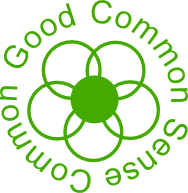Dec 2018 - There’s so much we don’t realise . . .
Published in Charlbury Chronicle December 2018
Extreme changes to our world’s climate could be avoided but we are running out of time. The IPCC’s latest report in October warns that we need to make changes from the bottom up i.e. we all need to change our lifestyles rather than wait for governments and “technology” to get the world out of this fix. But what can we do? We need to realise that nearly every decision we make has consequences for the climate and life on our planet, so the answer is simple, each time we make a decision we must consider the carbon footprint of that decision.
Unfortunately, things we buy and actions we take don’t have labels attached telling us the affect on the environment. In fact the exact opposite is occurring, we are swamped with media images showing lifestyles carrying on as normal, buying clothes, cars, fast food, furniture and foreign holidays. Will we be saved by the upcoming generation of young people caring more about their future? I doubt it, in October, Jonathan Dimbleby posed a question to the audience of under 26 year olds at the special 70th anniversary edition of Radio 4’s Any Questions. Referring to the IPCC report saying we need to walk more and use buses and trains rather than planes, he asked the audience for a show of hands if they travel by plane and think nothing of it nowadays when they have a bit of a break – the answer was that most of the audience put their hand up.
Apparently, the fashion industry is the second biggest polluter of the planet after oil and coal. In October, I watched the programme Fashion’s Dirty Secrets on BBC2 which revealed that irrigation for cotton growing in Uzbekistan has caused the Aral Sea to shrink to 10% of its original size – it used to be the 4th largest lake in the world. This region is the 8th biggest producer of cotton in the world. Cotton has a huge environmental footprint, not just the water and pesticides used for growing it, but also the dyeing industry that severely pollutes rivers, and the energy required to fuel all the processes involved. All this to produce clothing, which many people find exciting to buy, but in reality might be only worn once or even never worn at all before being thrown away. So maybe the answer is to get the buying buzz from hunting down pre-loved clothes in charity shops and online - and to wear a few clothes a lot, rather than have loads of clothes hoarded away.
Clothing is one example of the carbon footprint of a product far outweighing the packaging you buy it in. Food is another, enormous energy and resources go into producing food which is bought cheap and easily wasted. The long distances and time involved in bringing food to supermarkets means it needs packaging to keep fresh and undamaged. Plastic stops food drying out and keeps food fresher for longer – you will see more supermarkets using vacuum packs for meat which means it will last longer in the store and at home. However, it is plastic packaging that is incensing public outrage and the unintended consequence of this is that alternative non oil-based packaging can have a far greater consequence for the climate than plastic. Compostable bio-plastic isn’t the answer either, because it needs a high temperature to break down, temperatures that aren’t found naturally in the wild either, so if discarded as litter, it still poses as much a problem to wildlife as conventional plastic. Currently in Oxfordshire, compostable plastics can’t be recycled with other plastics and can’t be composted either with garden waste or food waste because the temperatures of the processes aren’t high enough, so compostable plastic has to be disposed of in the light grey bin for incineration to create electricity.
The carbon footprint of meat production is another controversial subject with many younger people becoming vegans. Traditionally cattle have grazed grass on permanent pastureland in areas not suitable for growing other crops. In the UK, our famous beef breeds originated in the wetter and hillier western parts of the country converting that lush grass to high quality protein. This is a world apart from the American model of keeping cattle enclosed in huge pens without a blade of grass in sight and feeding them grain - which they are not evolved to eat and digest. In Europe much beef comes from cattle fed on animal feed containing soya from South America grown in areas once rain forest. So there is meat, and there is meat, if you look hard enough you will find meat labelled “Pasture-fed for life” which means the animals have lived their whole lives eating grass. The IPCC recommend reducing the amount of meat we eat and buying better meat.
CE
Charlbury Green Hub
